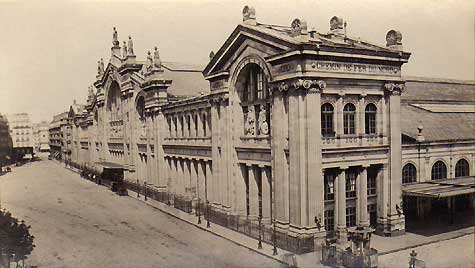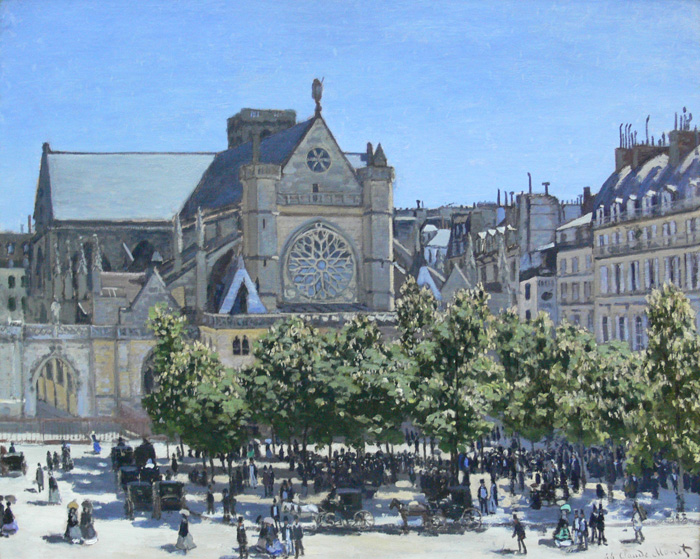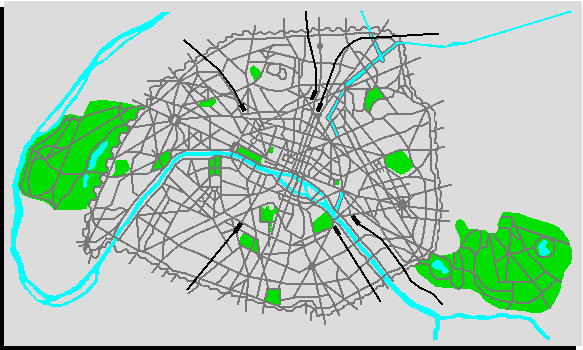Colin Jones, Paris: A History
Haussmannism and the City of Modernity
1851-89 , pp. 310-311
Railways and Straight Lines
As well as targeting the central zones of the city, Haussmann sketched out developments through to the city limits and, in particular, to the mainline railway stations. He was not alone in regarding the latter as new gateways to the city, which involved a rethinking of urban space. His aim was consequentially to establish a framework for circulation which dovetailed with the new Paris street-plan and also with the national road and rail systems. Both were anyway highly (to be frank: overly) Parisocentric in orientation. Each terminus received duly monumental treatment, often using modern materials of glass and iron. The stations were increased in size so as to keep up with expanding passenger numbers, and they were often massively over-decorated too -- the Gare du Nord, rebuilt in the early 1860s by Jean-Jacques Hittorff, one of the regime's many talented architects. In addition they were provided with capacious approach roads to make them stand out. Drawing a straight line along the Boulevards de Strasbourg and Sebastopol towards the Gare de l'Est [the East Train Station] necessitated the mutilation of the medieval churches of Saint-Leu-Saint-Gilles and of Saint-Laurent, the latter among the most ancient ecclesiastical sites in the city. For Haussmann, straight lines and urban functions prevailed over the claims of history. On the Left Bank the Rue de Rennes gave the Gare Montparnasse a similarly impressive vista. from the Boulevard Saint-Germain (though plans to extend the street through to the river Seine came to nothing).
Railroads Entering the City in the 19th Century |
The wish to combine optimal traffic flow with visual perspective on major monuments, evidence in the radial street networks around the railway termini, was a more general feature of Haussmann's work. He was said to have nurtured a secret wish to knock down the church of Saint-German-l'Auxerrois [see below] so as to allow an uninterrupted vista between the Hotêl de Ville and the east front of the Louvre, but, he realized that, as a Protestant, his authorization of the demolition of the church whose bell had in 1572 tolled the opening of the Massacre of Saint Bartholomew's Day would cause a major interdenominational incident. . . .
The desire to have every boulevard focusing on a monument because a little overdone and fetishistic. The architect Bailly, for example, was obliged to place the dome of the Tribunal de Commerce on the Ile de la Cité askew of the structure so that it could open up a perfect sightline down the Boulevard Sébastopol.

Gar du Nord (North Train Station)

Claude Monet, Saint-Germain-l'Auxerrois Paris (1867)
This medieval church was one the sites that Haussmann wished to destroy to make room for a street, but was prevented by public opinion.
